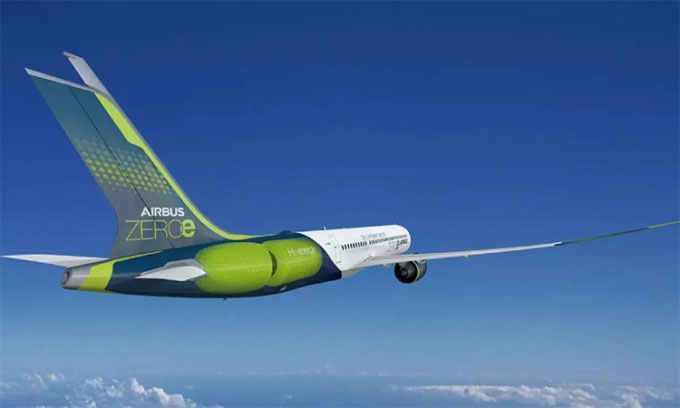Airbus is developing a super-cooled hydrogen storage tank for zero-emission aircraft, with testing expected between 2026 and 2028.
Airbus is designing new cold hydrogen tanks known as “cold hearts” to support the future liquid hydrogen ZEROe aircraft, as reported by Interesting Engineering on November 26.

The ZEROe hydrogen-powered aircraft. (Photo: Airbus).
“Hydrogen is key to our mission of bringing zero-emission aircraft to market by 2035, but it needs to be stored at a very cold temperature of -253 degrees Celsius. Utilizing this technology means developing advanced cold hydrogen tanks,” Airbus stated.
There are two main technologies that allow aircraft to fly directly on hydrogen: powering a hydrogen combustion engine through a modified gas turbine engine, or using hydrogen fuel cells to generate electricity. Another option is to combine both technologies.
Regardless of the method, keeping hydrogen cold is essential. Hydrogen must be stored at -253 degrees Celsius and maintain this stable temperature throughout the flight. This is why the tanks for hydrogen aircraft are a critical component. However, they are challenging to manufacture as they differ significantly from traditional aircraft fuel tanks.
To develop the tanks, Airbus established Zero Emission Development Centers (ZEDCs) in Nantes (France) and Bremen (Germany) about 15 months ago. The tanks are produced in Nantes, while the cryogenic systems, which vaporize the liquid hydrogen, are manufactured in Bremen.
“We aim to optimize the tank for greater efficiency and further reduce environmental impact. A zero-emission aircraft needs to achieve emissions as close to zero as possible throughout its lifecycle,” shared Chris Redfern, head of the ZEROe aircraft production unit.
The next step for the engineering team is to assess the prototype and identify potential improvements. They are gathering insights and testing data from this first model to develop a second prototype, which is expected to be filled with hydrogen.
The team’s main goal is to maximize space, improve performance, and simplify the manufacturing process. They anticipate needing about another year to fabricate and test the second prototype. The ultimate aim is to have a fuel tank ready for the A380 test aircraft around 2026 to 2028.


















































